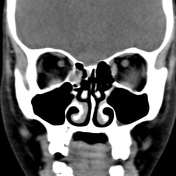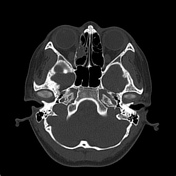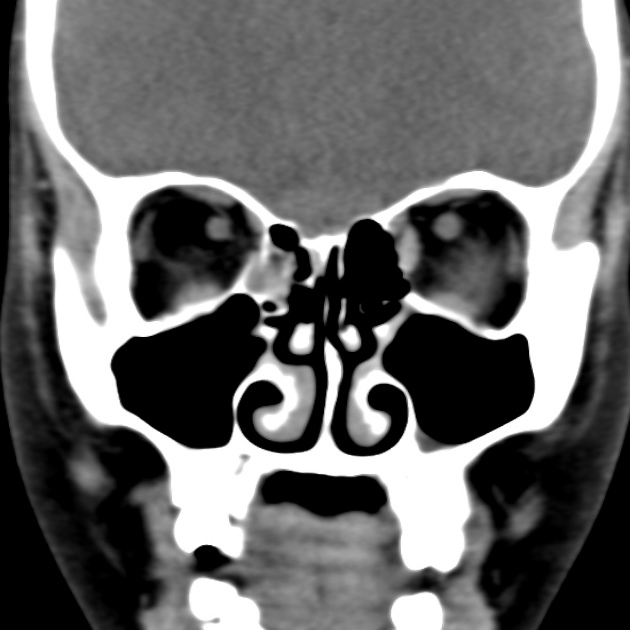Presentation
Trauma to the right orbit. Subsequent visual impairment.
Patient Data







Fracture of the right lamina papyracea (medial orbital wall) with a small degree of malalignment at the fracture site.
The medial rectus muscle is entrapped in this step in the lamina papyracea. Inflammatory change in the medial right extraconal space.
Case Discussion
The typical orbital blow-out fracture involves the inferior orbital wall. By far the commonest rectus muscle entrapment involves the inferior rectus muscle.
This case is the less commonly observed medial orbital wall blow-out fracture with entrapment of the medial rectus muscle.
The fracture was surgically repaired with PDS with a good clinical outcome.




 Unable to process the form. Check for errors and try again.
Unable to process the form. Check for errors and try again.